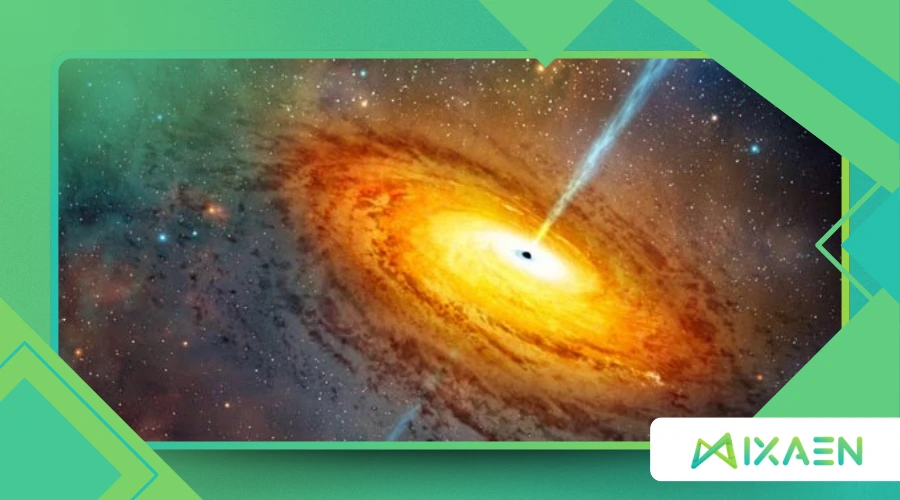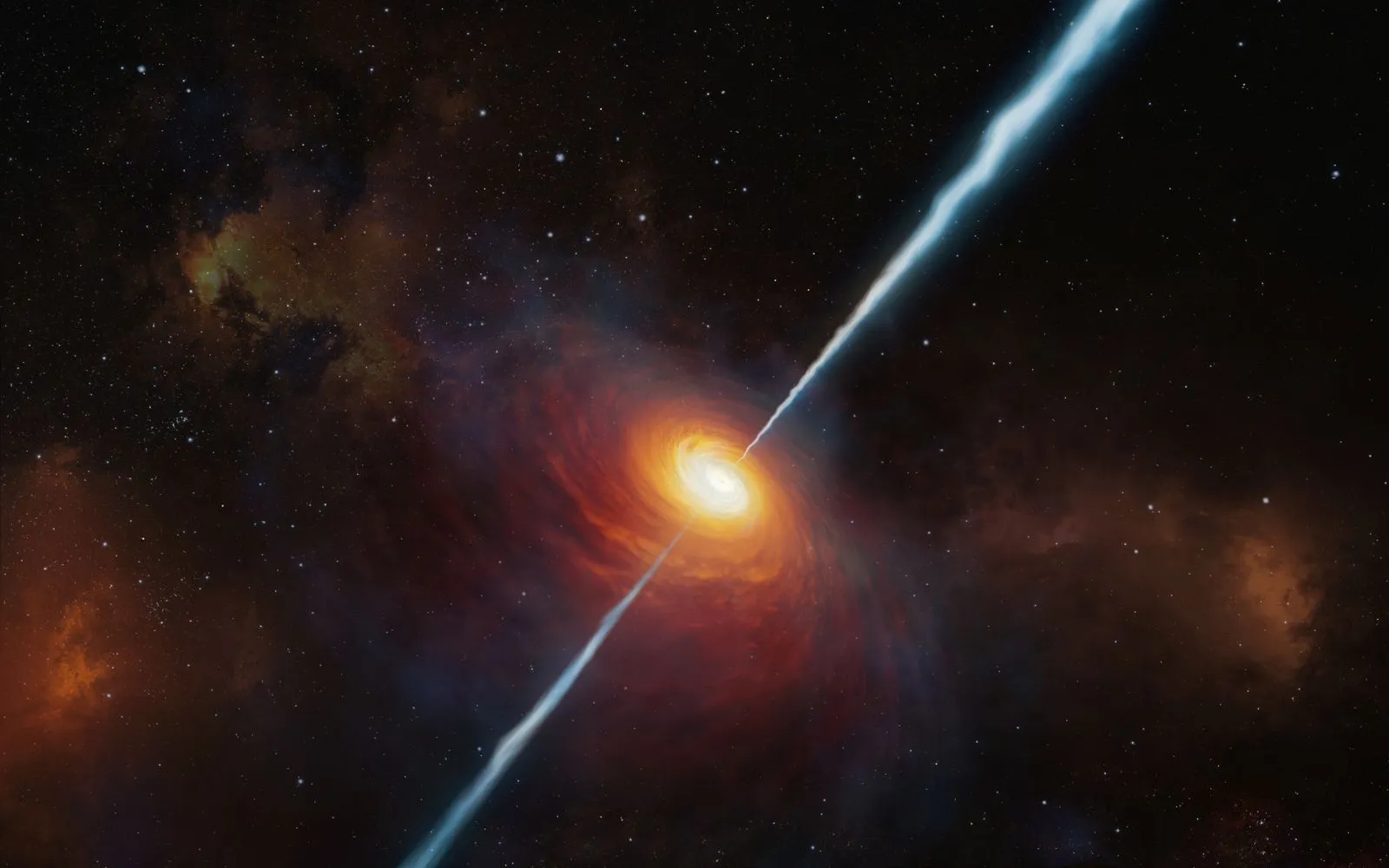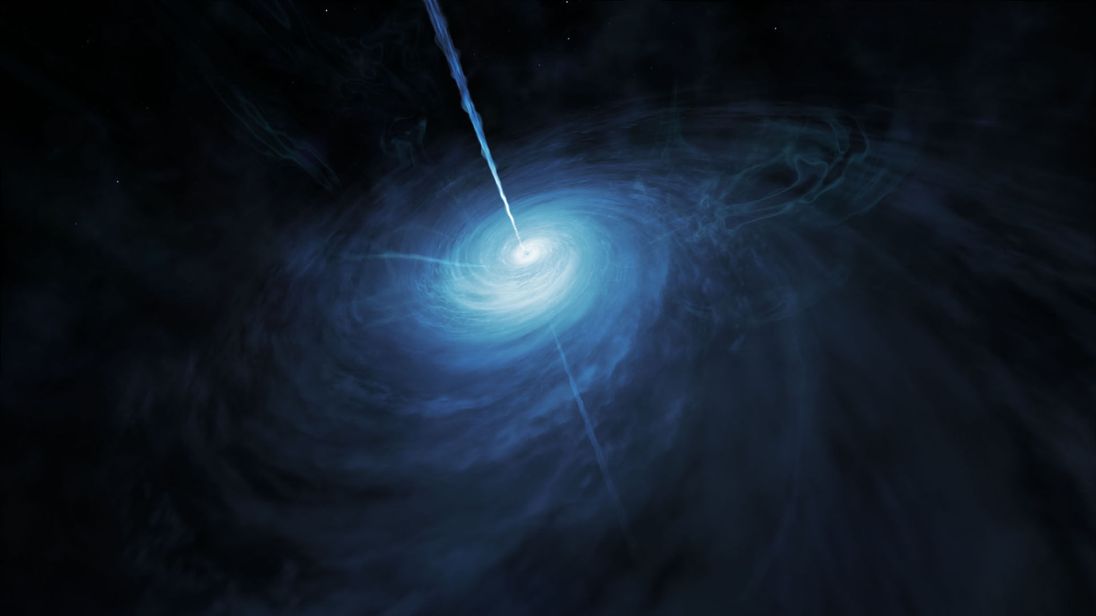Quasar in the Sun’s Place: What Would Happen to Earth?

Imagine waking up one day to find the Sun replaced by a blazing quasar in the Sun’s place.
Anúncios
This cosmic scenario isn’t just science fiction—it’s a terrifying possibility that would rewrite Earth’s fate in seconds.
Quasars, the universe’s most luminous objects, are powered by supermassive black holes devouring matter at incredible speeds.
If one took our star’s position, the consequences would be cataclysmic.
But what exactly would unfold?
Would Earth vaporize instantly, or would other bizarre cosmic phenomena take over?
Let’s explore the science behind this hypothetical disaster and uncover whether humanity—or even our planet—could survive.
The sheer scale and energy of a quasar challenge our understanding of the cosmos.
These entities can outshine entire galaxies and emit radiation that can affect celestial bodies across vast distances.
As we delve into this hypothetical scenario, we’ll uncover the intricate details that make quasars one of the universe’s most fascinating and dangerous phenomena.
In addition to their brightness, quasars also release immense amounts of energy in the form of jets and radiation, which can influence the surrounding space.
This energy can disrupt the formation of new stars and planets, altering the evolution of entire galaxies.
Understanding these cosmic giants helps us appreciate the delicate balance of forces that govern our universe.
The Unmatched Power of a Quasar
Unlike the Sun’s steady fusion-powered glow, a quasar is a ravenous beast.
These objects emit energy equivalent to trillions of suns, fueled by supermassive black holes surrounded by accretion disks of superheated gas.
NASA’s Chandra X-ray Observatory has observed quasars outshining entire galaxies, with some emitting jets of plasma stretching millions of light-years.
If a quasar in the Sun’s place suddenly appeared, its sheer brightness would outmatch every star in the Milky Way combined.
The first effect? A lethal flood of radiation.
Radiation Apocalypse: Instant Sterilization
The Sun’s surface temperature is around 5,500°C—a mild warmth compared to a quasar’s accretion disk, which can exceed 10 million degrees.
Earth’s atmosphere would ionize within minutes, stripping away our protective shield.
High-energy X-rays and gamma rays would bombard the surface, killing all life instantly.
A 2019 study in The Astrophysical Journal modeled quasar radiation effects on nearby planets, finding that even at 1 light-year away, the radiation would be 1,000 times deadlier than a supernova.
At the Sun’s distance (8 light-minutes), Earth wouldn’t stand a chance.

Table 1: Sun vs. Quasar Energy Output
| Feature | Sun | Typical Quasar |
|---|---|---|
| Luminosity | 3.8 × 10²⁶ W | 10⁴⁰ W |
| Temperature | 5,500°C (surface) | 10,000,000°C (disk) |
| Primary Energy | Visible light, UV | X-rays, gamma rays |
| Life Impact | Sustains life | Instantly lethal |
The implications of such energy output extend beyond immediate destruction.
The long-term effects on the solar system would be catastrophic, altering orbits and destabilizing planets.
Additionally, the intense radiation could trigger chain reactions in nearby celestial bodies, leading to further cosmic chaos.
As we study quasars, we also realize their role in galaxy formation and evolution.
They can influence star formation rates and the distribution of matter in the universe, showcasing the interconnectedness of cosmic events.
This understanding emphasizes the importance of protecting our own solar system from potential cosmic threats.
+ The Composition of the Universe: What Are Galaxies and Stars Made Of?
Gravitational Chaos: Would Earth Be Swallowed?
Beyond radiation, the quasar’s supermassive black hole—millions of times heavier than the Sun—would warp spacetime itself.
The Sun’s gravity keeps Earth in a stable orbit, but a black hole’s pull is far more extreme.
Spaghettification or Ejection?
If the black hole’s mass matched the Sun’s, Earth might stay in orbit—but quasars are anything but gentle.
Their violent accretion disks generate relativistic jets, streams of charged particles moving near light speed.
These jets could either:
- Vaporize Earth if directly hit.
- Fling it into deep space via gravitational slingshot.
Even if Earth avoided immediate destruction, tidal forces would stretch and compress the planet, a process called spaghettification.
The oceans would rip away, and the crust would shatter.
Table 2: Possible Scenarios for Earth
| Scenario | Outcome | Timeframe |
|---|---|---|
| Direct radiation hit | Complete sterilization | Minutes |
| Gravitational slingshot | Ejected into interstellar space | Hours to days |
| Jet interaction | Planetary disintegration | Seconds |
| Tidal disruption | Crust torn apart | Days to weeks |
The gravitational pull of a quasar would introduce unpredictable dynamics in the solar system.
Other planets and celestial bodies could be drawn into chaotic orbits, leading to potential collisions.
This gravitational chaos would not only threaten Earth but could also disrupt the entire structure of the solar system.
If humanity were somehow to survive the initial onslaught, the long-term consequences of living in such a dynamically unstable environment would be dire.
Resources would become scarce, and the fabric of life as we know it would be irrevocably altered.
The study of gravitational effects in extreme environments also provides insights into fundamental physics, including general relativity.
By understanding how black holes interact with surrounding matter, scientists can refine their models of the universe’s evolution.

++ Cosmic Map: Understanding Light-Year Distances in Our Solar System
Could Humanity Survive? A Futile Hope
Some might wonder if underground bunkers or advanced shielding could protect us.
Unfortunately, no.
The quasar’s radiation would penetrate even the deepest shelters, and the loss of sunlight would collapse ecosystems instantly.
Photosynthesis would cease, and food chains would collapse.
Even if we somehow shielded against radiation, the quasar in the Sun’s place would eventually consume all nearby matter, including Earth.
The only theoretical escape? A civilization capable of interstellar travel—but even then, survival odds would be near zero.
Humanity’s technological advancements have not yet reached the level required for such a drastic migration.
Even with the most advanced spacecraft, the journey would take generations, and the destination would be uncertain.
Furthermore, the resources needed for such an endeavor would be astronomical, making it an impractical solution for the majority of humanity.
The psychological impact of such a catastrophic event would also be profound.
The fear and uncertainty of facing a quasar would likely lead to societal breakdown, as people grappled with the reality of impending doom.
In a scenario where survival is unlikely, the human spirit might be tested in ways we can hardly imagine.
For more insights on quasars and their implications, check out NASA’s Quasar Overview.
Final Verdict: A Cosmic Death Sentence
Replacing the Sun with a quasar isn’t just an upgrade in brightness—it’s an existential reset button for Earth.
The combination of extreme radiation, gravitational chaos, and violent jets ensures that no life, structure, or even the planet itself would endure.
While this scenario remains hypothetical, studying it helps us appreciate the delicate balance that makes our solar system habitable.
The Sun’s quiet stability is a cosmic gift—one we shouldn’t take for granted.
So the next time you enjoy sunlight, remember: in a universe of violent quasars and black holes, our peaceful star is the ultimate guardian of life.
Understanding the nature of quasars also highlights the importance of protecting our planet and its delicate ecosystems.
As we continue to explore the universe, let’s remain aware of how unique and precious our solar system is.
Exploring such extreme cosmic phenomena not only enriches our knowledge of the universe but also inspires future generations of scientists and astronomers.
By studying these distant objects, we can better understand our own place in the cosmos and the fragility of life on Earth.
Would you attend a LAN party today? Share your favorite offline gaming memories in the comments!
